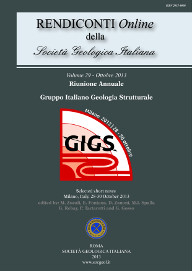
The Pleistocene activity of the eastern Southalpine chain unravelled by the terraced staircase of the Meduna valley (NE Italy)
Giovanni Monegato (a) & M. Eliana Poli (b)
(a) Institute of Geosciences and Earth Resources C.N.R. - via Valperga Caluso, 35 - 10125 Torino, Italy. E-mail: g.monegato@csg.to.cnr.it
(b) Department of Chemistry, Physics and Environment, Udine University, via Cotonificio, 114 – 33100 Udine, Italy. E-mail: eliana.poli@uniud.it
Volume: 29/2013
Pages: 108-111
Abstract
The results of stratigraphic and morphotectonic analyses made on the Pleistocene terraces at the outlet of the Meduna valley (eastern Carnic Prealps) are presented and discussed. The investigated area belongs to the front of the eastern Southalpine chain that hit destructive earthquakes both historical and instrumental. Structural framework of the front of the Southalpine chain is made by a set of WNW-ESE striking, SSE-verging medium to low-angle thrusts gradually propagating in the Friulian Plain. In the study area, located south of the Periadriatic thrust, the main structural elements are the WSW-ENE striking Maniago and M. Jouf thrusts. East of Meduno locality, this structural framework shows a noticeable undulation, probably reflecting a Cretaceous or Eocene paleostructure and causing a NW-SE striking dextral transpressive transfer zone. Both thrusts show evidence of Quaternary activity. Nine depositional units Early Pleistocene – Holocene in age and six terraced orders are detected. Stratigraphic and geometric relationships between depositional units and terraced surfaces allowed to reconstruct the chronology of the depositional events. The study confirms a Quaternary activity for the Maniago and M. Jouf faults. In particular the Maniago thrust shows an upper Pleistocene – Holocene uplift rate of about 1.1 mm/y.
Keywords
Get Full Text